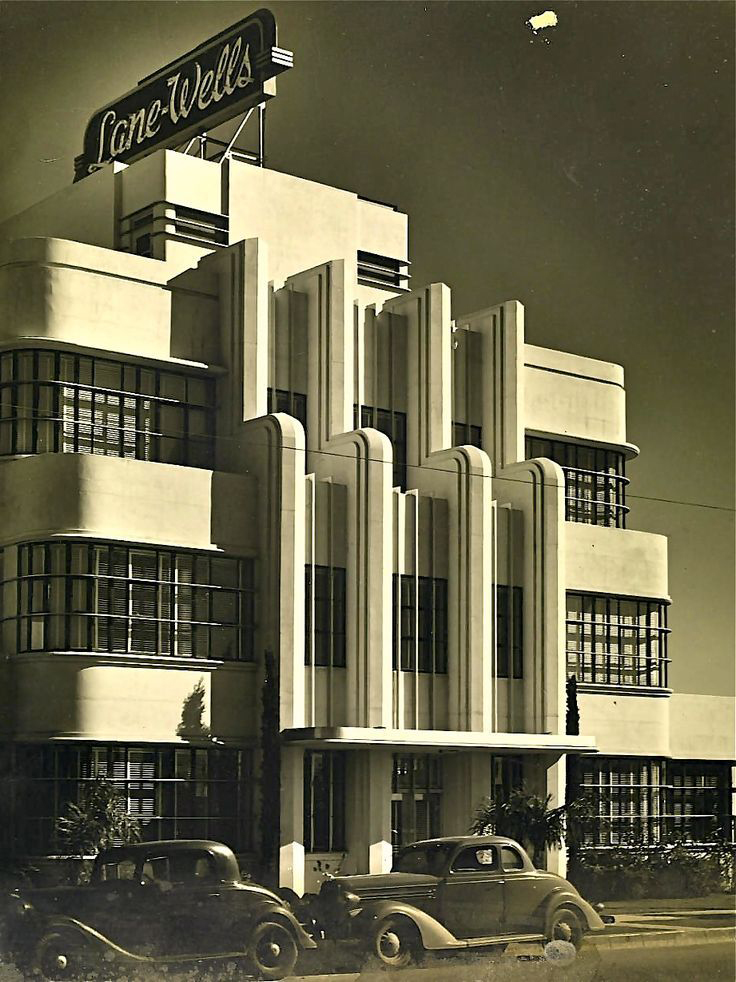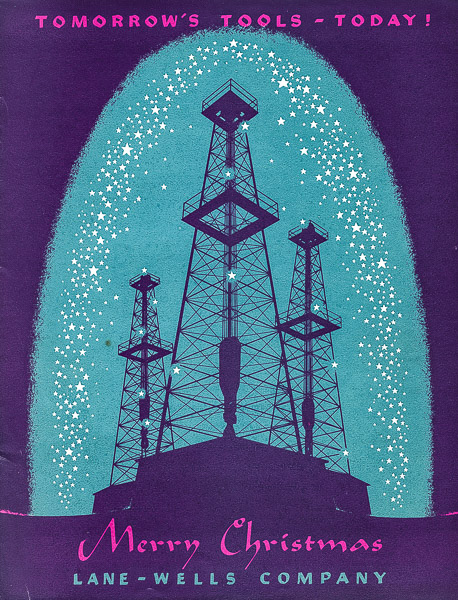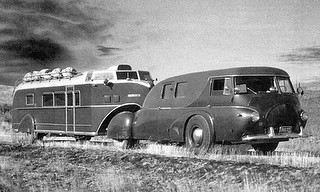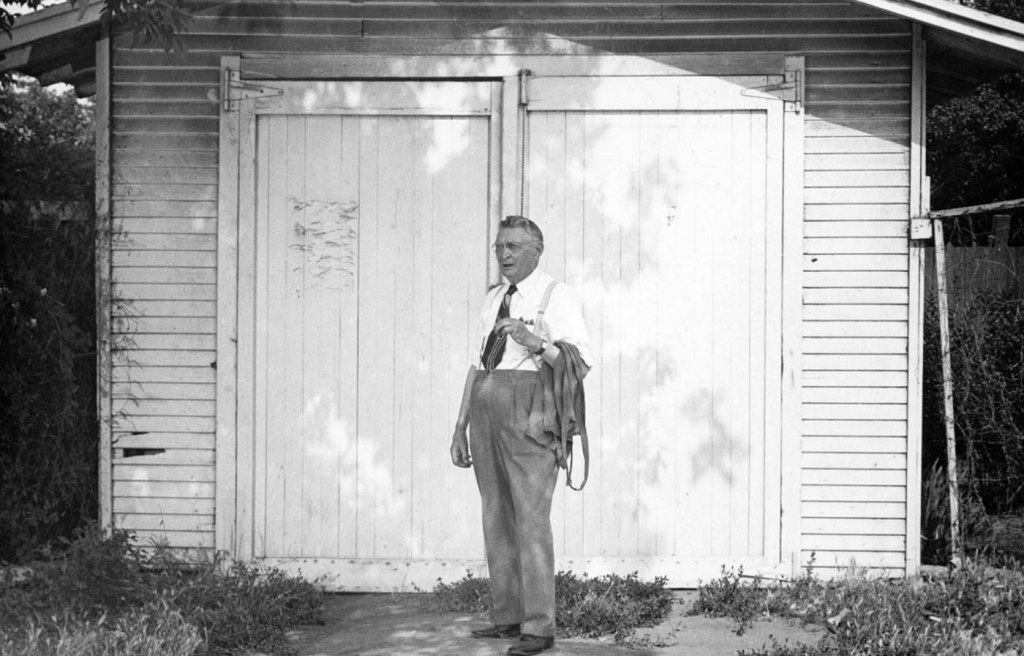
Image: circa 1939 photo via https://martinturnbull.com/2013/10/12/lane-wells-company-headquarters-in-los-angeles-circa-1939/ .
“The work of architect William E. Mayer, Lane-Wells’ west coast headquarters was completed in 1937. Even in a city full of Streamline Moderne buildings, these two were exceptional. In addition to the horizontal banding typical of streamline style, Lane-Wells had vertical bands as well. On the main Administration Building these vertical bands cascade over the top, like a fountain.
“Were the vertical bands just a design flourish? Perhaps. Maybe they were meant to create a visual balance with the horizontal bars.
“I think the answer is none of the above. I think those vertical bands represent a fountain of oil. This place is an Art Deco temple to the gods of petroleum.”
Excerpt from http://www.decopix.com/the-lane-wells-story/ .

Image: 1939 Lane-Wells company newsletter from http://www.decopix.com/the-lane-wells-story/ .
About Lane-Wells (from the excerpt link above):
“In December 1932, Walter T. Wells and Wilfred G. Lane convinced the Union Oil Company to let them test their “gun perforator” on a dry well in Montebello, California. The gun was a device, lowered into the well, that fired .45 calibre bullets laterally into the well housing.
“It was dangerous work and carried the possibility of damaging the well. But it worked. The next day, the “dry” well was pumping 32 barrels.
“Rejuvenating wells was good business. By 1947, the two-man startup had nearly 100 gun perforating trucks and had completed 92,000 perforating jobs. There were offices in Houston and Oklahoma City plus 40 field branches, but none could compare with company headquarters in Los Angeles.”



